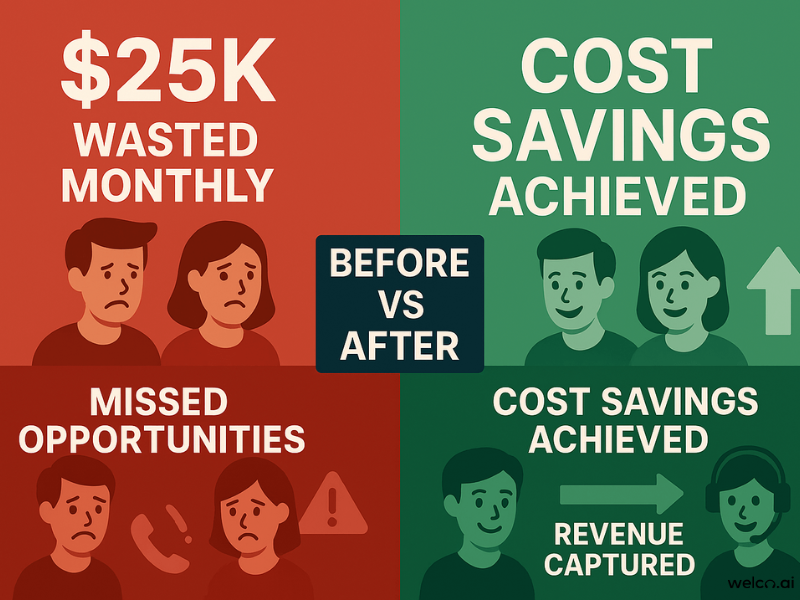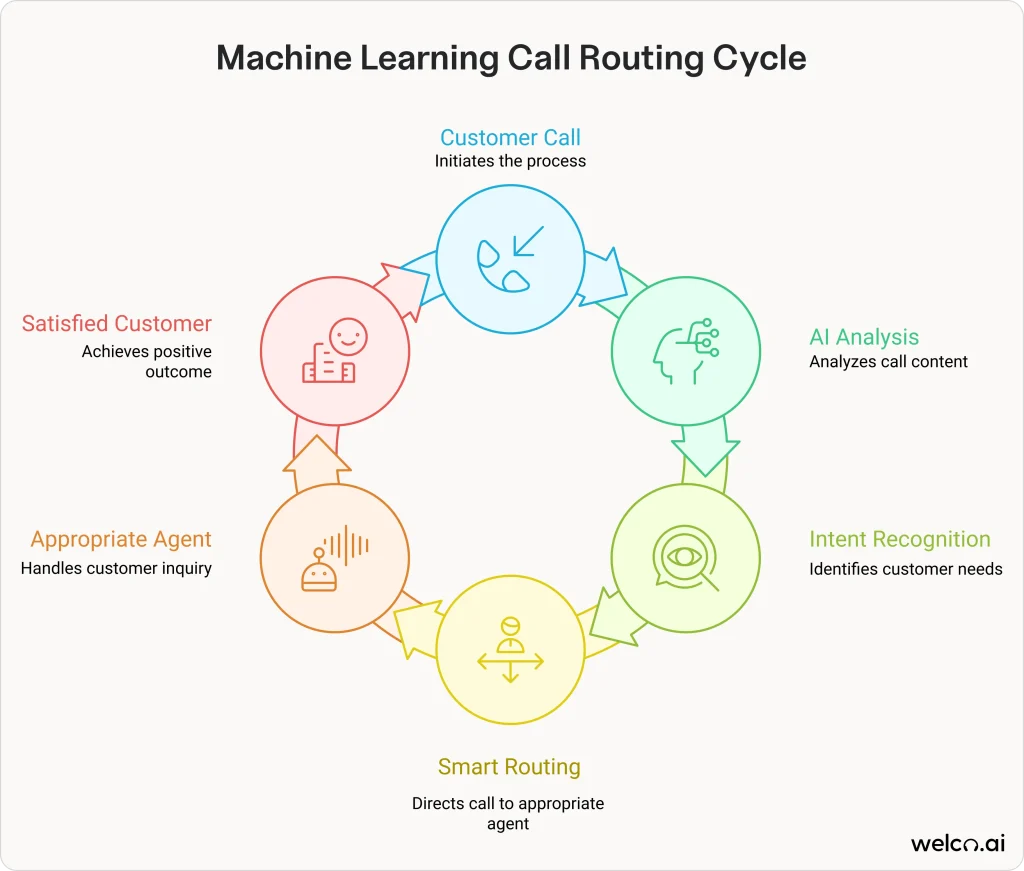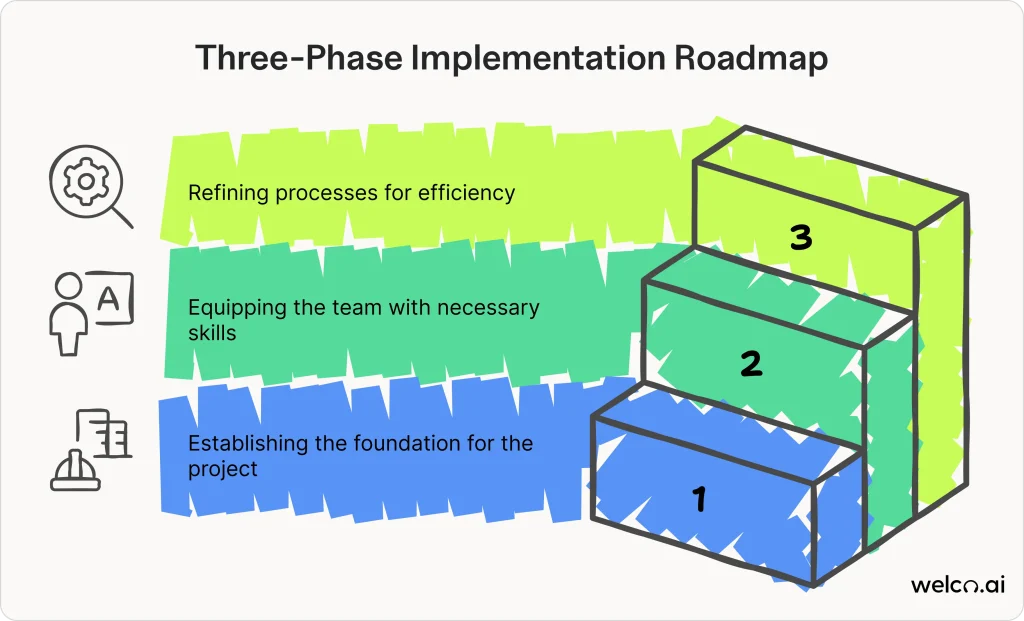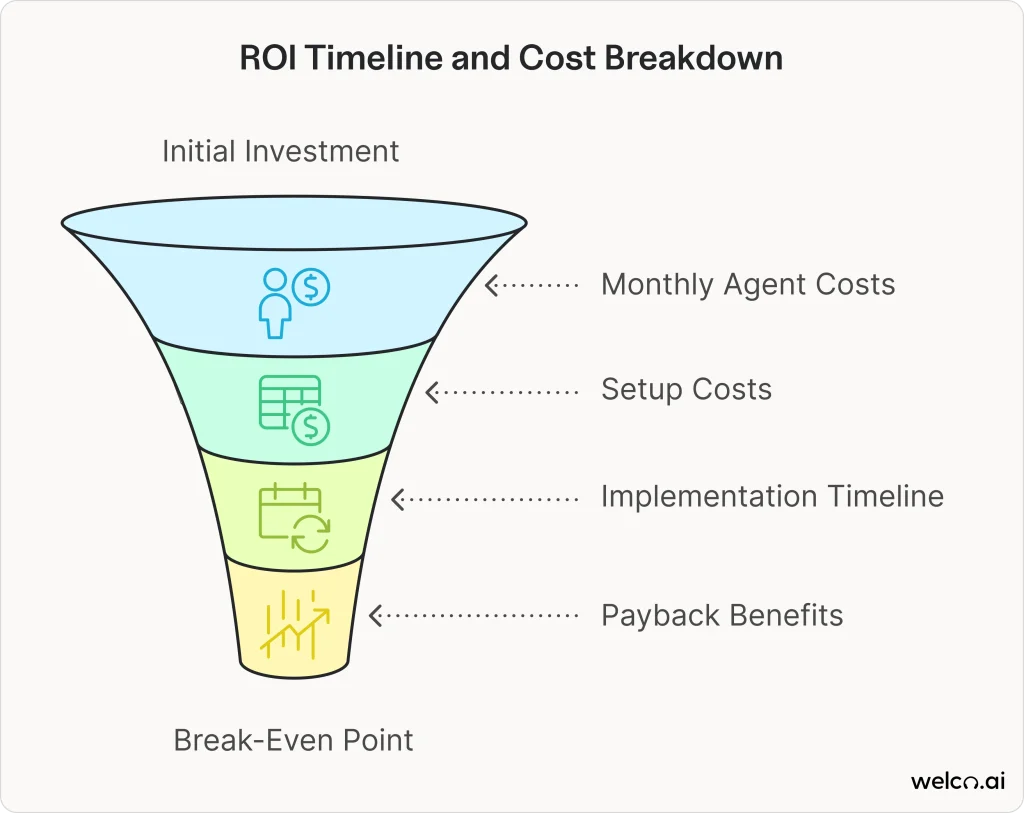
As a call center optimization consultant who’s implemented AI algorithms for 60+ companies, I’ve watched businesses transform their customer service from a cost center into a competitive advantage. Here’s what actually works—and what doesn’t.
Bottom Line: ML-based routing typically reduces transfers by 15–25%, with higher gains in well-tuned programs. Plan for 2–3 months to initial capability and 6–12 months for full optimization, depending on scope and integrations.”
Your Phone System is Probably Bleeding Money
Here’s what I tell every client: You’re losing more money on bad call routing than you think through inefficient business processes.
Last month, I reviewed analytics for an insurance agency handling 10,000 monthly calls using data analytics. The owner thought his call center software was fine—until we ran the numbers:
- 40% of calls got transferred at least once
- Transfers are linked to lower CSAT and FCR; overall queue abandonment often runs 5–10% depending on wait thresholds.
- Hidden cost: $25,000 monthly in wasted operations

The math that makes business owners sick: Each transfer adds handle time and increases the risk of abandonment—another reason smarter routing pays off quickly in high-volume environments.
Here’s the story that haunts me: A longtime client called to update her life insurance after her husband died. She got transferred three times and had to re-explain her loss to each agent. By the end, she was crying—not just from grief, but from our system making her relive the worst moment of her life over and over.
That’s when the owner realized he’d been spending thousands on marketing to attract new customers while his customer service automation was actively driving existing ones away.
Modern businesses are discovering that understanding how natural language processing powers modern AI receptionists can eliminate these painful transfer experiences entirely.
Why Your Current System Fails (Even the “Smart” Ones)
The biggest mistake I see? Businesses keep trying the same failed approaches using outdated enterprise software:

Phone Trees: “Press 1 for billing, press 2 for support…” Customers can’t categorize their own problems. You need billing help, but is a disputed charge “billing” or “account issues”?
Skills-Based Routing: Better than random assignment, but can’t predict when a “simple” password reset becomes a 45-minute security nightmare.
IVR Systems: Still force customers into rigid boxes for messy, real-world problems.
The fundamental flaw: These systems wait for customers to tell them what’s wrong instead of listening and learning from context clues through predictive analytics.
For businesses stuck with outdated phone systems, comparing AI receptionists vs traditional IVR systems reveals why modern call centre technology is capturing so many opportunities.
What ML Systems Actually Deliver for Your Bottom Line
Here’s what I tell clients who ask “How does this magic actually work?”
Machine learning systems listen and learn instead of forcing customers through phone trees. Within 15-30 seconds, they understand not just what customers are asking for, but how complex the situation probably is—and route accordingly to protect your revenue through AI optimization.
Intent Recognition: “I need to update my address” routes differently than “I’m having trouble with that address thing we discussed last week.” Same topic, completely different complexity levels.

Emotion Detection: Frustrated customers get priority routing to your best problem-solvers. Happy customers might go to agents who excel at spotting upselling opportunities.
Pattern Learning: The system remembers that certain customers always have complex 15+ minute calls, even when they start with “simple” requests through business intelligence.
Smart Agent Matching: Instead of “who’s available,” it asks “who’s most likely to solve this quickly and keep the customer happy?” using AI algorithms.
The technological foundation for these capabilities relies on sophisticated conversational AI architecture for phone interactions, which processes multiple data streams simultaneously to create seamless customer experiences.
Real Results from Real Businesses
These are recent program outcomes from my implementations; results vary by domain, volume, and integration depth.
| Business Type | Monthly Calls | Key Improvements | Monthly Savings | Implementation Challenge |
| Healthcare Network | 15,000 | Transfer rate: 35% → 12%<br>Patient satisfaction: 3.1 → 4.2 | $18,000 | Medical terminology training added 4 months |
| Regional Bank | 45,000 | First-call resolution: 67% → 84%<br>Average call time: -2.3 minutes<br>Cross-selling: +40% | $35,000+ | Agent retraining took 8 months for full results |
| Software Support | 22,000 | Technical escalations: -55%<br>Satisfaction gains: modest | Below projections | System learned terminology faster than expected |
These results look impressive, but here’s what vendors won’t tell you about getting there through performance optimization.
The success of these implementations often depends on proper AI integration with existing business systems, which requires careful planning and realistic timeline expectations.
The Implementation Reality No One Talks About
What vendors promise: Fast results
What actually happens:

Phased rollouts—initial capability in 2–3 months, with major gains compounding over 6–12 months as the system learns your patterns.
The biggest mistake I see? Companies expecting instant transformation. The first month usually feels like a step backward as the system learns your specific patterns through machine learning.
This is where voice recognition technology breakthroughs have made a significant difference, reducing the learning curve and improving accuracy from day one.
Which Solution Fits Your Business
For 20-50 agents: Start with Five9 or Amazon Connect. Easier implementation, good feature set, reasonable costs.
For 50+ agents with IT resources: Genesys or enterprise-grade Amazon Connect. More complex but more powerful enterprise solutions.
For healthcare/finance: Look for HIPAA/compliance-focused providers. Don’t compromise on security for features.
For unique requirements: Custom solutions using Google Cloud AI or Microsoft Bot Framework. Higher risk but potentially perfect fit through software integration.
Red Flags During Vendor Selection

- Promises of 70%+ automation rates (possible but rare)
- Won’t discuss training data requirements
- Can’t provide customer references from similar businesses
- Claims about “instant” results through AI SEO tools
For businesses handling sensitive information, understanding AI receptionist security features becomes crucial during vendor evaluation.
The Real Costs and Timeline
What you’ll pay: Pricing varies by features and usage; plan higher for advanced analytics and compliance.
When you’ll see payback: Most businesses break even within 4-6 months through ROI optimization:

Common outcomes include 15–25% fewer transfers, double-digit FCR gains, and 10–25% AHT reductions; escalation reductions vary by use case.
Break-even point: Companies handling 5,000+ monthly calls typically see clear benefits. Under 2,000 calls monthly may not justify costs unless you have specific pain points.
Many businesses also invest in AI receptionist voice customization to ensure their automated call distribution systems sound professional and match their brand personality.
When Implementations Go Wrong
Common failure patterns I’ve seen:
Treating it as plug-and-play: Companies that skip change management and proper training struggle. This is a business process improvement, not just new software.
Unrealistic expectations: Those expecting 30-day miracles often quit during the learning curve.
Insufficient training data: Call center machine learning systems need extensive examples of your specific call patterns and terminology.
Lack of executive support: Without leadership backing during the “implementation dip,” teams revert to old systems.
Understanding ML vs traditional call routing differences helps set realistic expectations during the transition period.
Your Next Steps
If you’re tired of losing customers to transfer hell and ready to turn your contact center solutions into a competitive advantage:
- Calculate your hidden costs: How much are transfers and frustration really costing you?
- Start with a pilot: Pick one department or call type before rolling out company-wide
- Do your vendor homework: Demand customer references and performance guarantees for call center software
- Plan for change management: Budget 6-12 months for full implementation with proper training
- Set real success metrics: Define measurable improvements beyond vague “efficiency gains”
The technology is here, it works, and your competitors are probably already using machine learning. The question isn’t whether AI optimization will improve your business—it’s whether you’ll implement it before or after your competition does.
Frequently Asked Questions
How much will this actually cost my business?
For 10,000 monthly calls, expect $2,000-5,000/month total through cloud solutions. But if you’re losing $25,000/month to inefficient handling, the ROI optimization math is simple.
What if it doesn’t work for our industry?
The AI algorithms adapt—healthcare uses it for appointment scheduling, law firms for case routing, retail for order status. Success depends on training the system with your specific terminology and call patterns through business intelligence.
How do we avoid getting stuck with expensive technology we can’t use?
Look for vendors offering performance guarantees tied to specific metrics, 90-day trial periods, and references from businesses that faced implementation challenges with enterprise software.
Will customers hate talking to AI?
They’re not talking to AI—they’re getting routed to the right human faster through customer service automation. Customers experience better service with agents who understand their needs. They rarely know machine learning routing was involved.
“Our business seems too unique for this technology.”
If you handle complex, varied customer requests, you’re actually a perfect candidate for process automation. The key is proper implementation and realistic expectations about the 6-12 month timeline for digital transformation.
